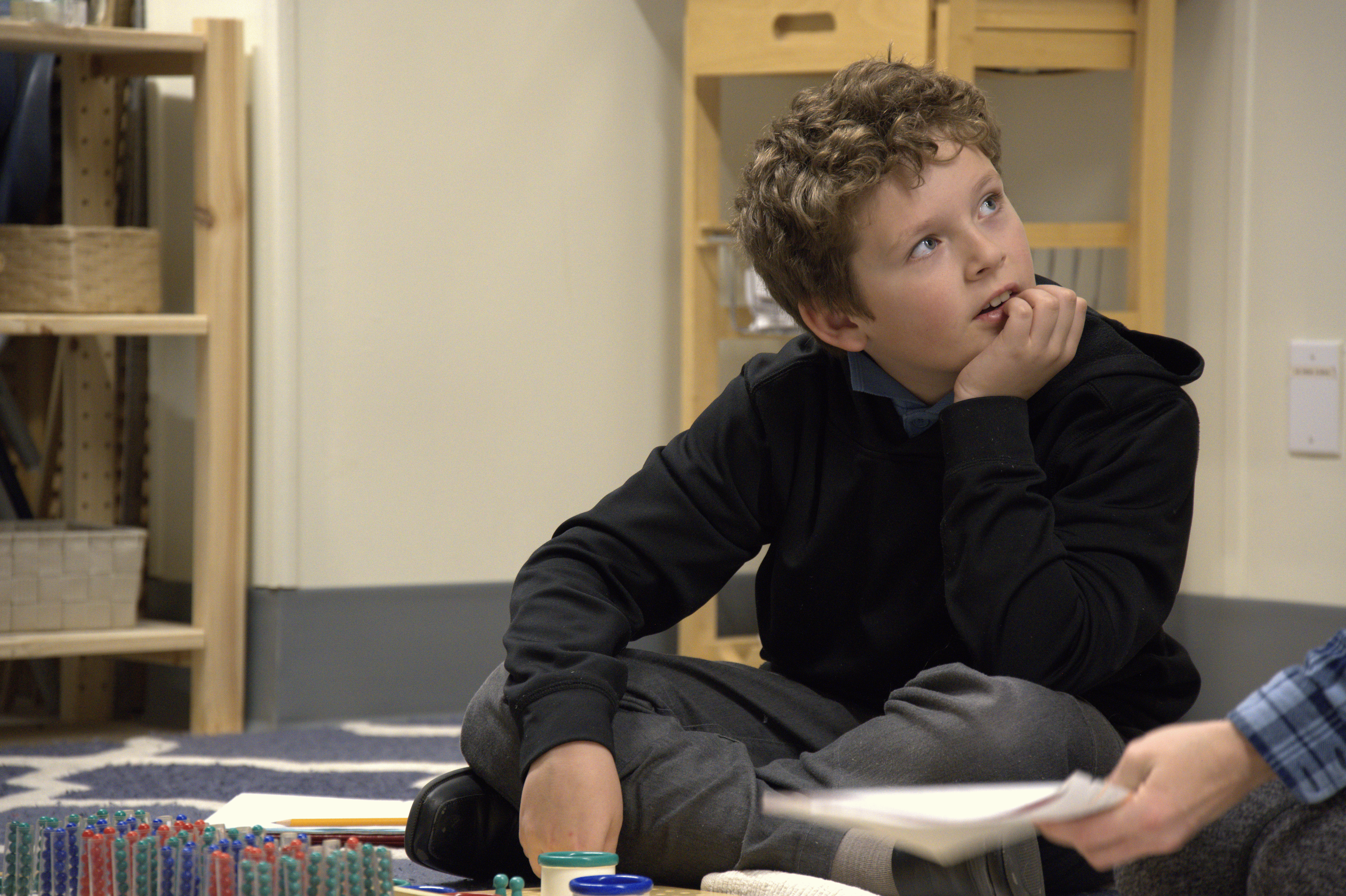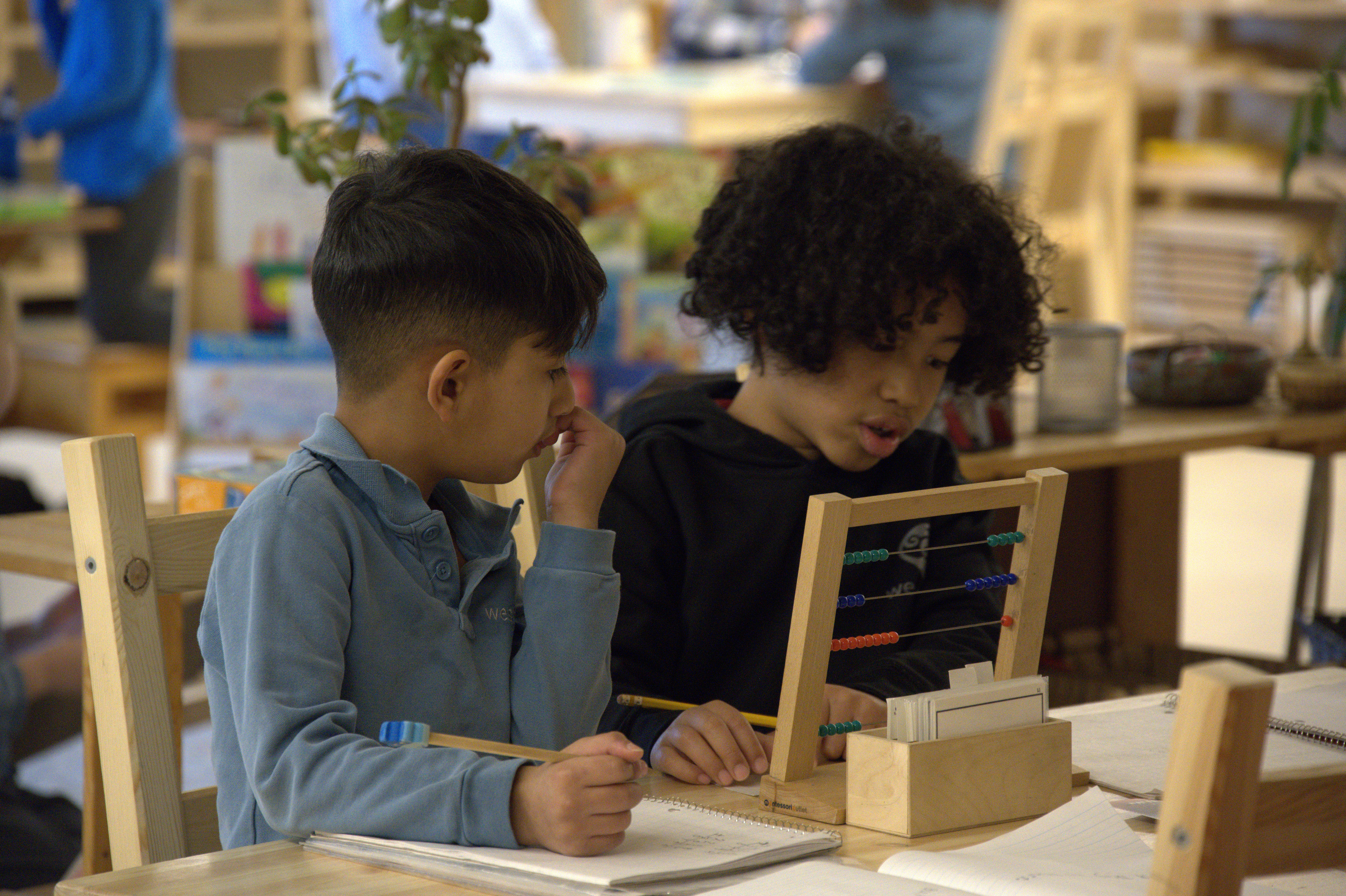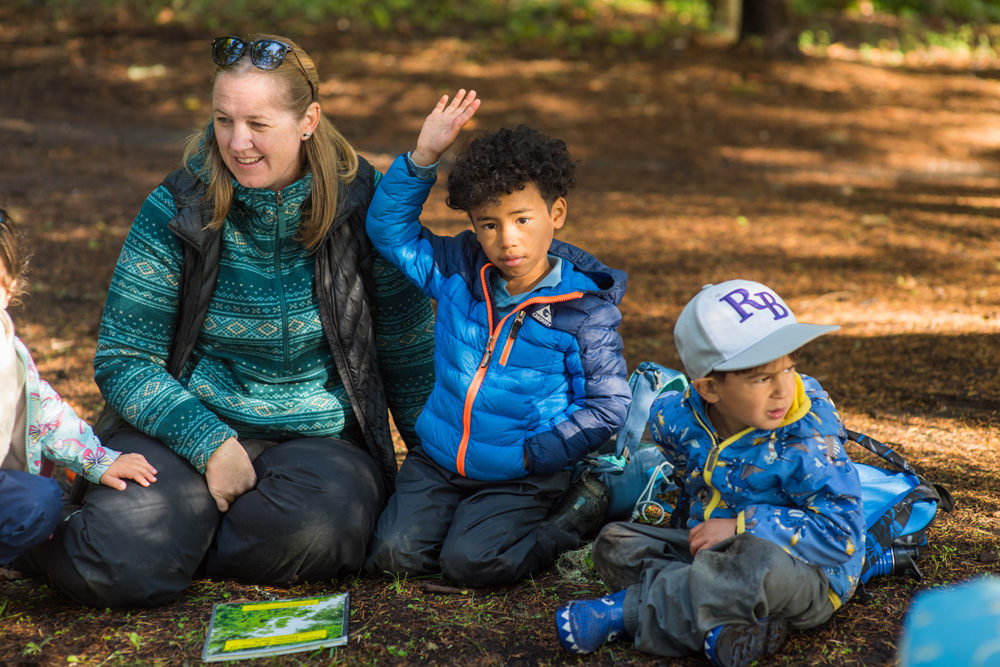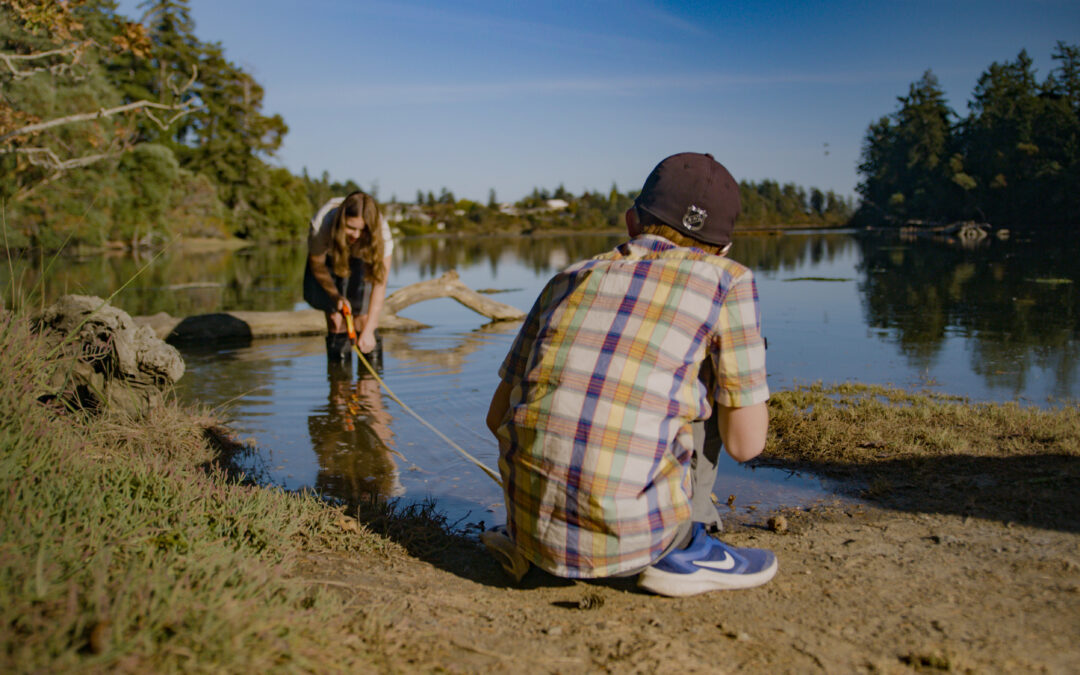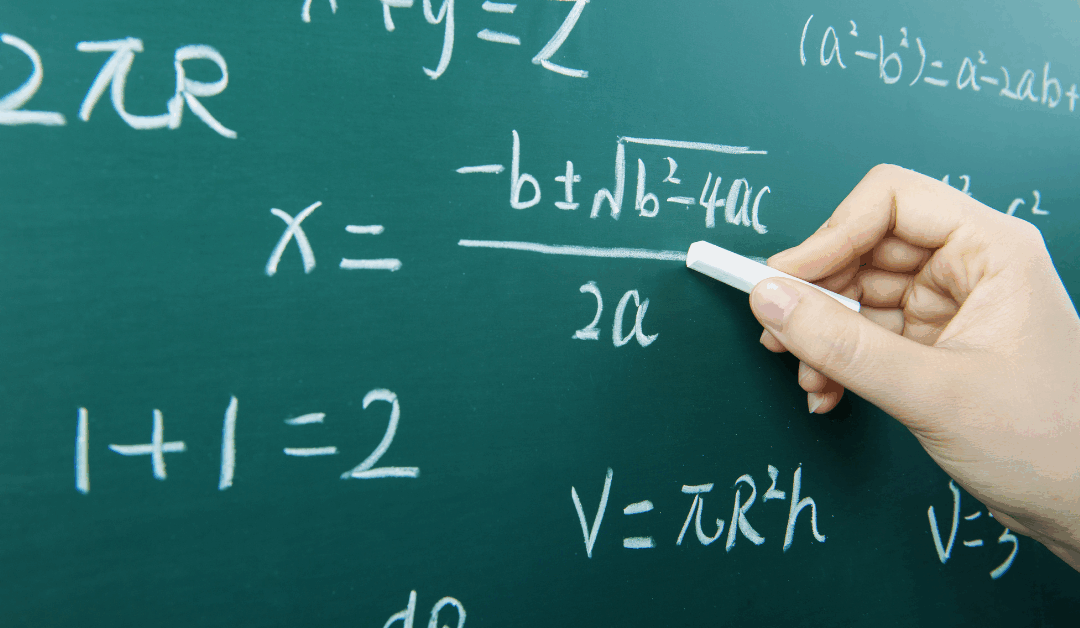
The Real Reason Kids Struggle with Math (It’s Not What You Think)
The Real Reason Kids Struggle with Math (It’s Not What You Think)
The Real Reason Kids Struggle with Math
(It’s not what you think)
Your child brings home another disappointing math test. Tears, frustration, maybe a declaration that they’re “just bad at math.” Sound familiar?
Before you sign up for tutoring or worry about learning disabilities, consider this: the struggle might not be about math at all. It might be about how we’re teaching it, the stress we’re placing on achievement, and what we’re communicating about mistakes, learning, and worth.
Bottom line: When children develop anxiety around academic performance, especially math, it often stems from external pressure and fear of failure rather than actual ability. Learning thrives in environments that balance appropriate challenge with emotional safety and emphasize growth over grades.
When Good Kids Burn Out: What Parents Need to Know About School Stress
Academic achievement matters. Of course it does. Parents naturally want children to develop skills, knowledge, and the capacity to pursue their goals. But somewhere along the way, many families and schools have crossed a line from healthy expectations into territory that damages the very outcomes we’re trying to support.
Research examining academic pressure and adolescent mental health has found clear evidence that excessive academic stress contributes to depression, anxiety, and even suicidal ideation in school-aged children. This isn’t a minor concern affecting a small subset of struggling students. Studies report that academic pressure represents a significant public health issue affecting young people across diverse contexts and backgrounds.
The pressure starts earlier than most parents realize. While we often associate academic stress with high school students preparing for college, research shows that even elementary-aged children report feeling stressed about school performance. In one survey, nearly 80 percent of children ages eight through seventeen reported feeling stressed at school some or most of the time.
Victoria parents face particular challenges navigating this landscape. Our region values education highly. Families make significant sacrifices to provide children with academic opportunities. The achievement culture runs strong, and that intensity, while well-intentioned, can create environments where children internalize the message that their worth depends on grades, test scores, and outperforming peers.
The irony cuts deep: excessive academic pressure often produces the opposite of its intended effect. Research indicates that academic stress can actually diminish academic achievement, reduce motivation, and increase the risk of school dropout. When stress becomes chronic or exceeds manageable levels, it interferes with the very learning processes we’re trying to support.
The Research on Academic Stress and Child Development
Understanding what research actually tells us about academic stress helps parents distinguish healthy challenge from harmful pressure. The science offers clear guidance, though it often contradicts prevailing school culture.
Academic stress refers to the emotional strain caused by school-related responsibilities including grades, homework, testing, social expectations, and extracurricular obligations. When this stress becomes excessive or chronic, it triggers a cascade of negative effects on both mental health and academic performance.
A systematic review examining the association between academic pressure and adolescent mental health problems analyzed international evidence and concluded that academic pressure represents a potential candidate for public health interventions that could prevent adolescent mental health problems. The review found consistent associations between academic pressure and depression, anxiety, self-harm, and suicidal behaviors.
The mechanisms behind these effects involve both psychological and physiological processes. Chronic stress activates the body’s stress response systems, flooding developing brains with cortisol and other stress hormones. Over time, this chronic activation impairs memory, attention, and executive function. The very capacities children need for academic success become compromised by the pressure to achieve academically.
Academic stress doesn’t operate in isolation. It creates what researchers describe as a domino effect: stress leads to academic burnout, which generates depression symptoms, which further impairs academic performance, creating a self-reinforcing cycle. Students caught in this pattern often feel there’s no way out, as poor performance under stress creates more anxiety, especially when school culture places premium value on achievement over wellbeing.
The toll extends beyond academics. Research documents that academic pressure affects students’ relationships, sleep patterns, physical health, and long-term psychological development. Studies have found academic stress associated with substance use, poor sleep quality, aggressive behavior, and decreased overall wellbeing.
Developmental timing matters significantly. While all students can be affected by academic pressure, adolescence represents a particularly vulnerable period. During these years, identity and self-worth become tied to achievement and evaluation from significant adults like parents and teachers. The combination of developmental vulnerability and heightened academic demands creates conditions where stress can have particularly powerful negative effects.
Cultural context influences how academic pressure manifests and affects students. Research examining academic stress across different societies finds that in cultures placing strong emphasis on academic excellence as a pathway to upward mobility and family honor, students experience additional layers of pressure. However, the negative effects of excessive academic stress appear consistent across cultural contexts.
Here’s what stands out in the research: while appropriate academic challenge supports development, excessive pressure that generates chronic stress actively harms both learning and wellbeing. The line between helpful challenge and harmful pressure may vary among individual children, but the existence of that line is clear.
Signs Your Child May Be Experiencing Educational Pressure
Recognizing when academic expectations have crossed into harmful territory helps parents intervene before stress becomes entrenched. Children don’t always articulate what they’re experiencing, but they show it through changes in behavior, emotion, and physical health.
Common emotional and behavioral indicators include increased anxiety specifically around school or homework, perfectionism that prevents task completion, avoidance of academic work despite apparent capability, emotional outbursts connected to grades or performance, statements about being “stupid” or “bad at” subjects, and loss of interest in learning activities they previously enjoyed.
Physical symptoms often accompany academic stress. These might include headaches, stomach aches without clear medical cause, changes in sleep patterns such as difficulty falling asleep or nightmares about school, changes in appetite, and general fatigue that seems disproportionate to activity level.
Social and academic warning signs include withdrawal from peers, declining performance despite increased effort, reluctance or refusal to attend school, excessive time spent on homework relative to reasonable expectations for age and grade level, and difficulty completing assignments even when understanding the material.
The relationship between effort and distress provides important clues. A child working hard and feeling occasionally frustrated represents normal academic challenge. A child working hard while showing signs of chronic anxiety, expressing hopelessness about ability, or developing physical symptoms suggests pressure has become excessive.
Some children internalize pressure without obvious external signs. These students may maintain high achievement while experiencing significant internal distress. Watch for perfectionism that prevents risk-taking, extreme anxiety about minor mistakes, inability to enjoy accomplishments, and resistance to trying new activities where they might not immediately excel.
Different children show stress differently based on personality and developmental stage. Younger elementary students might express stress through behavior changes like tantrums or aggression. Older elementary and middle school students might show withdrawal or somatic complaints. Adolescents might verbalize stress more directly but also might mask it through substance use or other risk behaviors.
Context matters in interpreting these signs. Temporary stress around a particular challenging unit or upcoming test differs from chronic patterns persisting across time and subjects. Similarly, a child showing stress in one learning environment but not others suggests environmental factors rather than inherent inability to handle academic challenge.
The most concerning indicator: when academic concerns become central to a child’s self-concept and emotional state. If your child’s mood, self-esteem, and wellbeing rise and fall primarily based on grades and academic performance, pressure has likely exceeded healthy levels regardless of whether grades remain high.
How Montessori Addresses the Balance Between Challenge and Support
We’ve structured our entire educational approach around a fundamental understanding: children learn best when appropriately challenged within emotionally safe environments that treat mistakes as valuable learning opportunities rather than failures to be avoided.
Our Montessori philosophy rejects the achievement-at-all-costs mentality that creates academic stress. Instead, we recognize that students learn that mistakes are part of the learning process, perfection is not rewarded, and children are given opportunities to work through errors and resolve them on their own. This approach fundamentally changes the emotional experience of academic challenge.
The prepared environment supports this philosophy practically. Students learn in environments that recognize and respect individual variations in the learning process. Uninterrupted work periods facilitate the development of coordination, concentration, and independence without the constant evaluation and comparison that generate anxiety.
Our low student-to-teacher ratios allow us to truly know each child. We can identify when a student feels genuinely challenged in productive ways versus when they’re experiencing stress that impedes learning. This individual attention enables us to adjust challenge level, provide additional support, or modify approaches before stress becomes problematic.
Multi-age classrooms remove much of the competitive pressure inherent in traditional grade-level structures. When students aren’t constantly compared to same-age peers, the focus shifts from relative performance to individual growth. A child can work at their actual level in different subjects without stigma, developing genuine competence rather than performing for grades.
The emphasis on intrinsic motivation rather than external rewards fundamentally changes the learning relationship. Students learn through exploration in the classroom, pursuing their own interests within the prepared environment, leading to intrinsic motivation and sustained attention. When children work because they’re genuinely engaged rather than to earn grades or avoid punishment, stress decreases while learning deepens.
We’ve built our entire High School program around these principles. Students place their passions at the center of their high school experience, meeting BC Dogwood requirements through experiential integrated learning rather than through the traditional course-and-grade structure that generates so much pressure. This doesn’t mean lowering standards. It means structuring challenge in ways that support rather than undermine wellbeing.
Our approach to assessment reflects this philosophy. Rather than relying primarily on tests and grades that create anxiety, we use ongoing observation and portfolio assessment that captures growth over time. Students receive detailed feedback on progress without the constant ranking and evaluation that generates stress.
The physical environment supports balanced development too. Our 143-acre campus backing onto provincial land provides regular outdoor experiences that research shows support stress reduction and cognitive restoration. Students aren’t confined to desks for hours, trying to maintain unnatural stillness while managing academic anxiety. They move, explore outdoors, and integrate physical and cognitive activity in ways that support rather than stress their developing systems.
One parent described the difference: “The school has a relaxed feel; however, it is strong and consistent in routines, schedules, and academics. The classrooms are very calm with soothing colors, Montessori tools and materials, no distracting toys, no clutter, and immediate access to nature.”
That combination of calm environment, consistent structure, and genuine academic rigor without artificial pressure creates conditions where children can be appropriately challenged without the chronic stress that impairs learning.
Building Intrinsic Motivation vs External Achievement Focus
The distinction between intrinsic and extrinsic motivation sits at the heart of healthy academic development. Understanding this difference helps parents support learning in ways that build capacity rather than creating dependency and stress.
Intrinsic motivation means engaging in activity because it’s inherently interesting, satisfying, or meaningful. Children with strong intrinsic motivation pursue learning because they’re curious, want to master skills, or find the process engaging. This motivation sustains itself and typically leads to deeper learning and greater persistence through challenges.
Extrinsic motivation means engaging in activity to earn rewards or avoid punishments. Children operating primarily from extrinsic motivation complete homework to get good grades, avoid parental disappointment, or maintain status among peers. This motivation requires constant external reinforcement and often produces shallow learning focused on meeting minimum requirements.
Research consistently shows that intrinsic motivation supports better long-term outcomes. Students motivated intrinsically show greater creativity, deeper understanding, better problem-solving abilities, and more persistence when facing difficulty. They also report lower stress and greater enjoyment of learning.
The problem: most traditional school systems operate almost entirely on extrinsic motivation through grades, rankings, competition, and consequences for poor performance. This structure can actually undermine intrinsic motivation, particularly when children receive rewards for activities they initially found inherently interesting.
Parents unintentionally contribute to extrinsic motivation patterns through certain common practices. Offering rewards for good grades, comparing children to siblings or peers, expressing disappointment over less-than-perfect performance, focusing conversation primarily on grades rather than learning, and making privileges contingent on academic performance all shift children toward extrinsic motivation and increase academic stress.
Supporting intrinsic motivation requires different approaches. Ask questions about what children found interesting rather than just what grade they received. Express curiosity about their learning process and thinking. Provide opportunities to pursue topics of genuine interest even when not assigned. Celebrate effort, creative problem-solving, and growth rather than just correct answers. Model your own learning and curiosity about topics.
The Montessori approach builds intrinsic motivation structurally. Child-directed work within prepared environments means children regularly make choices about learning activities. This autonomy supports intrinsic motivation. The hands-on materials and exploratory methods engage natural curiosity. The absence of grades and gold stars keeps focus on learning itself rather than external rewards.
This doesn’t mean absence of structure or standards. It means the structure supports self-directed learning and the standards focus on actual competency rather than relative performance. Children still work hard and achieve high levels of knowledge and skill. They do so from internal drive rather than external pressure.
The long-term implications matter enormously. Children who develop strong intrinsic motivation continue learning throughout life because they’re drawn to growth and mastery. Children who learn primarily through extrinsic motivation often disengage from learning once external rewards disappear or become insufficient to motivate continued effort.
For parents concerned about competitiveness and future success, here’s the paradox: intrinsically motivated students often outperform extrinsically motivated peers in the long run precisely because their engagement runs deeper and persists longer. The student working to genuinely understand mathematics will ultimately achieve more than the student working to get an A.
Creating Sustainable Learning Habits That Last a Lifetime
The goal isn’t just getting through school. It’s developing approaches to learning that serve children for decades. Sustainable learning habits emerge from environments that balance challenge with support and treat learning as a lifelong journey rather than a series of evaluations to pass.
Sustainable learning requires what researchers call self-regulation: the capacity to manage attention, emotion, and behavior in service of goals. This develops through practice in environments that provide appropriate structure while allowing increasing autonomy. When children only learn under constant external control, they don’t develop internal regulatory capacities.
Our approach supports self-regulation development from early ages. Students are encouraged to decide things for themselves so that their independence and self-confidence flourishes and stays with them throughout life. They learn to take accountability for their work and manage their own responsibilities and learning goals in the classroom with teacher support. These aren’t abstract principles. They’re daily practices that build capacity.
Resilience represents another critical element of sustainable learning. The capacity to persist through difficulty, learn from mistakes, and maintain engagement despite setbacks determines long-term success more than innate ability. Resilience develops in environments where mistakes are normalized and treated as information rather than failure.
The relationship with challenge itself shapes sustainable learning patterns. Children need to experience appropriate difficulty and develop confidence in their ability to work through it. When everything comes easily, they don’t build persistence. When everything feels overwhelming, they develop learned helplessness. The sweet spot involves challenges matched to current capability with support available when genuinely needed.
Time management and organizational skills emerge gradually when children have opportunities to practice within supportive structures. Our uninterrupted work periods allow students to make choices about how to allocate time while teachers provide guidance. This develops executive function skills far more effectively than constant adult direction.
The ability to identify and pursue genuine interests drives sustainable learning. When students develop confidence in their capacity to explore topics deeply, they become lifelong learners. Our emphasis on child-directed learning within prepared environments means students regularly practice following intellectual curiosity rather than just completing assigned work.
Metacognition, or thinking about thinking, supports sustainable learning by helping students understand their own learning processes. When children can identify what helps them understand difficult concepts, recognize when they’re confused, and know strategies for working through challenges, they become independent learners. We develop these capacities through reflection and discussion rather than just content delivery.
The social and emotional dimensions of sustainable learning matter as much as cognitive skills. Understanding that everyone has their own individual needs while also contributing to the greater community teaches children to navigate diverse environments. The combination of independent work, small-group activities, and whole-group lessons introduces students to different learning relationships and interpersonal dynamics that prepare them for lifelong collaboration.
Physical health habits integrate with sustainable learning. Regular physical activity, adequate sleep, good nutrition, and time in nature all support cognitive function and stress management. Our emphasis on outdoor education and physical activity isn’t separate from academics. It’s foundational to sustainable learning capacity.
For parents, supporting sustainable learning means thinking long-term rather than optimizing for each grade or test. A child who develops genuine curiosity, persistence, self-regulation, and healthy relationships with challenge will thrive over decades even if their third-grade test scores weren’t the highest in the class. A child who achieves high grades through anxiety and external pressure likely faces increasing struggles as demands intensify.
The question isn’t “how do we get my child through this year successfully?” The question is “what approaches to learning will serve my child well at age 25, 35, and 45?”
Choosing Learning Over Pressure
Academic achievement matters, but it cannot come at the cost of children’s mental health and genuine development. The research offers clear evidence: excessive academic pressure harms both wellbeing and long-term learning outcomes. The achievement culture many schools and families have created often undermines the very goals it claims to serve.
Alternative approaches exist. Educational philosophies that emphasize balanced development, intrinsic motivation, appropriate challenge, and sustainable learning habits produce students who thrive both academically and emotionally. These approaches don’t require sacrificing standards or rigor. They require understanding that how we structure learning matters as much as what we teach.
For Victoria parents concerned about their children’s stress levels, academic anxiety, or overall wellbeing, the message is hopeful: change is possible. By choosing educational environments aligned with healthy development, shifting home practices away from excessive pressure, and advocating for balanced approaches in schools, parents can help children develop both competence and confidence.
Our 67-year history demonstrates that children can achieve academic excellence while maintaining joy in learning, healthy stress levels, and balanced development. It requires intentional design of learning environments and rejection of the achievement-at-all-costs mentality that creates so much harm.
Academic achievement at what cost? Discover an educational approach that balances challenge with wellbeing.
Your child deserves academic challenge without chronic stress. That balance is possible when educational philosophy prioritizes whole-child development.

